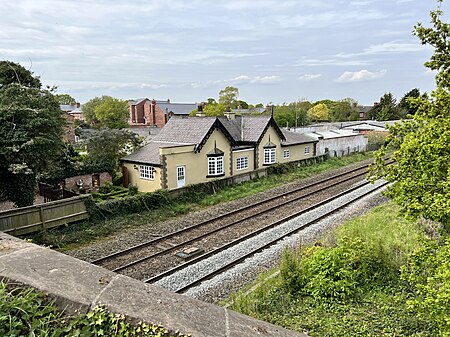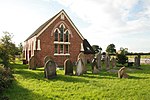Tattenhall Road railway station

Tattenhall Road railway station was a railway station situated a mile to the north of the village of Tattenhall, Cheshire on the Chester and Crewe Railway that was built in 1840 linking Chester to the north-west with Crewe to the south-east. The track now forms part of the North Wales Coast Line. The station was named Tattenhall Road in 1872 to distinguish it from another Tattenhall railway station, a little to the west of the village, on the Whitchurch and Tattenhall Railway branch line to Whitchurch. The station took back the name Tattenhall when the branch line closed in 1957. It was then itself closed in 1966. The station building still exists, now as a private house.
Excerpt from the Wikipedia article Tattenhall Road railway station (License: CC BY-SA 3.0, Authors, Images).Tattenhall Road railway station
Tattenhall Road, Chester Tattenhall and District
Geographical coordinates (GPS) Address External links Nearby Places Show on map
Geographical coordinates (GPS)
| Latitude | Longitude |
|---|---|
| N 53.1381 ° | E -2.7574 ° |
Address
Tattenhall Road
Tattenhall Road
CH3 9AZ Chester, Tattenhall and District
England, United Kingdom
Open on Google Maps







